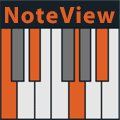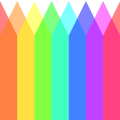NoteView Player

Introducing Selig NoteView, a simple Player device for Propellerhead’s Reason music creation software. Use this Player to see the real-time results of other players, to check that you’re receiving the expected notes at an instrument, and for real-time non-destructive transposing. You can also use the back panel CV inputs to transpose, choosing from the Note/Gate CV inputs (from sequencers etc.) or a standard bi-polar CV input with trim knob (from LFOs etc.).
Download the User Guide, below:
MAIN FEATURES
- View Eight Octaves of Note Data at Once
- Transpose ± 8 Octaves and ± 12 Semitones for ±9 Octaves Total
- CV Note Input for Transpose via Note/Gate or standard CV signals
- Switch between viewing MIDI input or output to compare before/after transpositions

PANEL LAYOUT
The front panel is simple, with three sets of controls plus the 8 octave keyboard/note display. There is also a standard Player On/Off switch to bypass transposition (notes will still display when off ).
CONTROLS
- On/Off: standard Player on/off control, similar to the on/bypass/off control on Reason effects. Bypasses any transposition values, but still displays notes even when off.
- Note Transpose display: shows the current transpose amount on the Note/Gate CV in jacks on the back panel.
- CV Transpose display: shows the current transpose amount on the CV In jack on the back panel.
Transpose MIDI:
- Octave: sets the transpose amount in octaves, ± 8 octaves total range.
- Semitone: sets the transpose amount in semitones, ±12 semitones total range. Display MIDI: selects whether the MIDI input or output (post transpose) is displayed.
- Left/Right Arrows Above Keyboard: located at either end of the keyboard by the octave names, shifts the display range up/down one octave at a time. When you reach either end it will wrap back around automatically.
THE BACK PANEL

TRANSPOSE CVs
- Transpose Gate/Note in: CV jacks accepting traditional Note/Gate signals from devices such as the Matrix or Thor’s sequencer, used to transpose the signal above/below middle C (60). When C 60 is received, no transposition takes place, and notes above/below 60 transpose the input up or down according to how far they are from middle C 60.
- Transpose CV In: CV jack accepting a bi-polar CV signal, with positive values transposing up and negative values transposing down. A value of zero produces no transposition. Total range is ±64 semitones.
WORKFLOWS
Obvious applications are to insert a NoteView at the beginning of a Player device “chain” to visualize the notes at the source/input of the chain (for trouble shooting or simply to confirm an input is present). Also handy at any other point and at the end of a Player device chain to see the results of Player devices on the MIDI signal.
Transposing note from the front panel is done via Octave and Semitone controls. You can also simultaneously transpose from back panel CV inputs.
Back panel CV inputs include Note/Gate CV inputs for control from other sequencer type devices like the Matrix, which is great for transposing on the fly for different song sections, or to create variations on arpeggiator patterns by transposing up/down various amounts as the sequencer plays.
There is also a standard CV control (with a trim knob) for create modulation effects via an LFO or other CV device, which can create complex and interesting variations on whatever is coming into NoteView.
MIDI CC CHART
- [19] = "player_enabled"
- [13] = "transpose_octave"
- [14] = "transpose_semitone"
CREDITS
Selig NoteView Player
Many thanks to all the dedicated beta testers!
Concept and Design by: Giles Reaves for Selig Audio, LLC.
Crafted by: Gustav Taxén, LoveOne Consulting AB and Giles Reaves, for Selig Audio, LLC.
Selig NoteView Player © 2018 Selig Audio, LLC, all rights reserved.


See Our Plugins at the Reason Shop
 Visit Selig Audio in the Reason Shop for more info and to purchase.
Visit Selig Audio in the Reason Shop for more info and to purchase.
 Check out our video demos and tutorials.
Check out our video demos and tutorials.